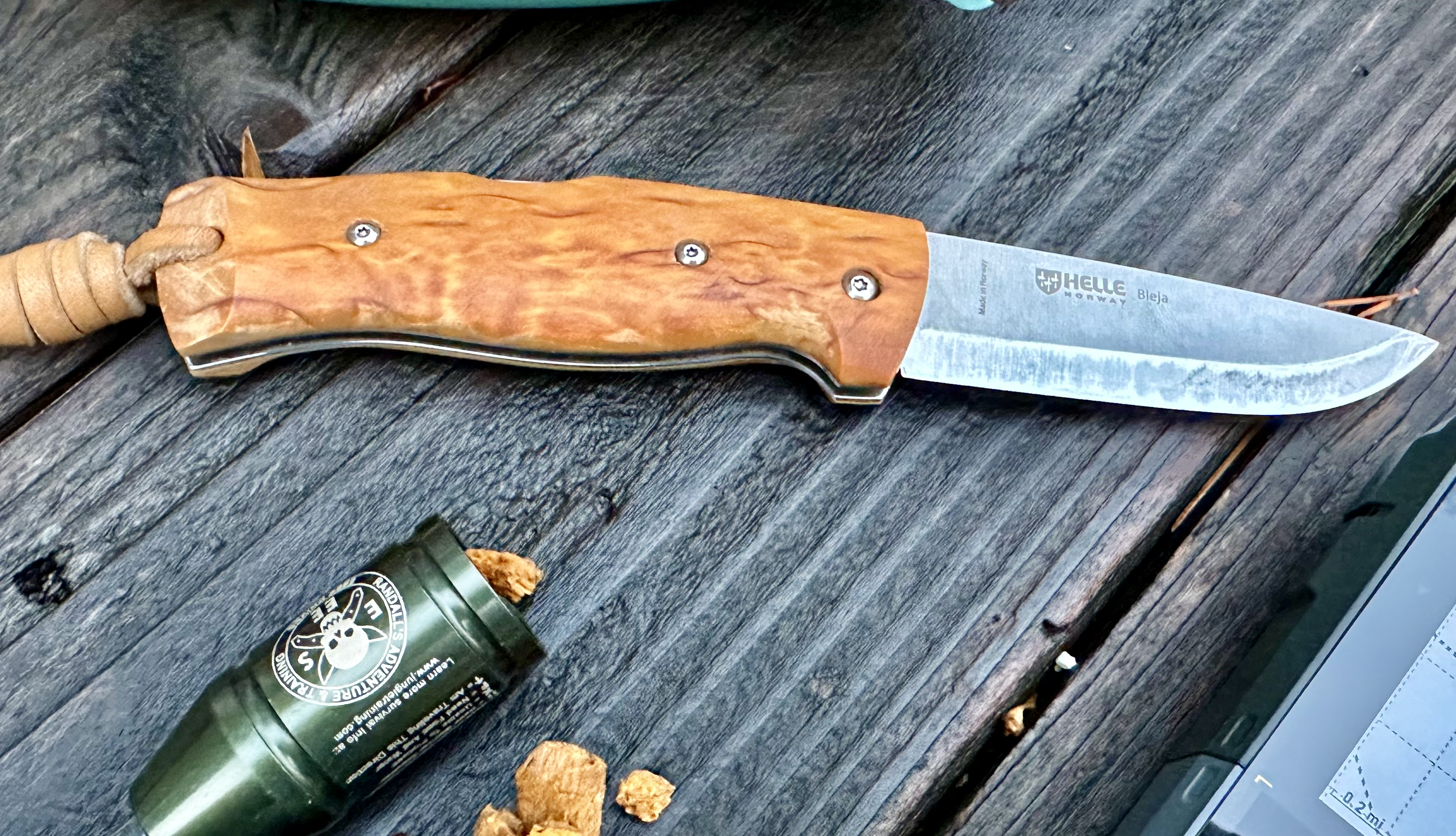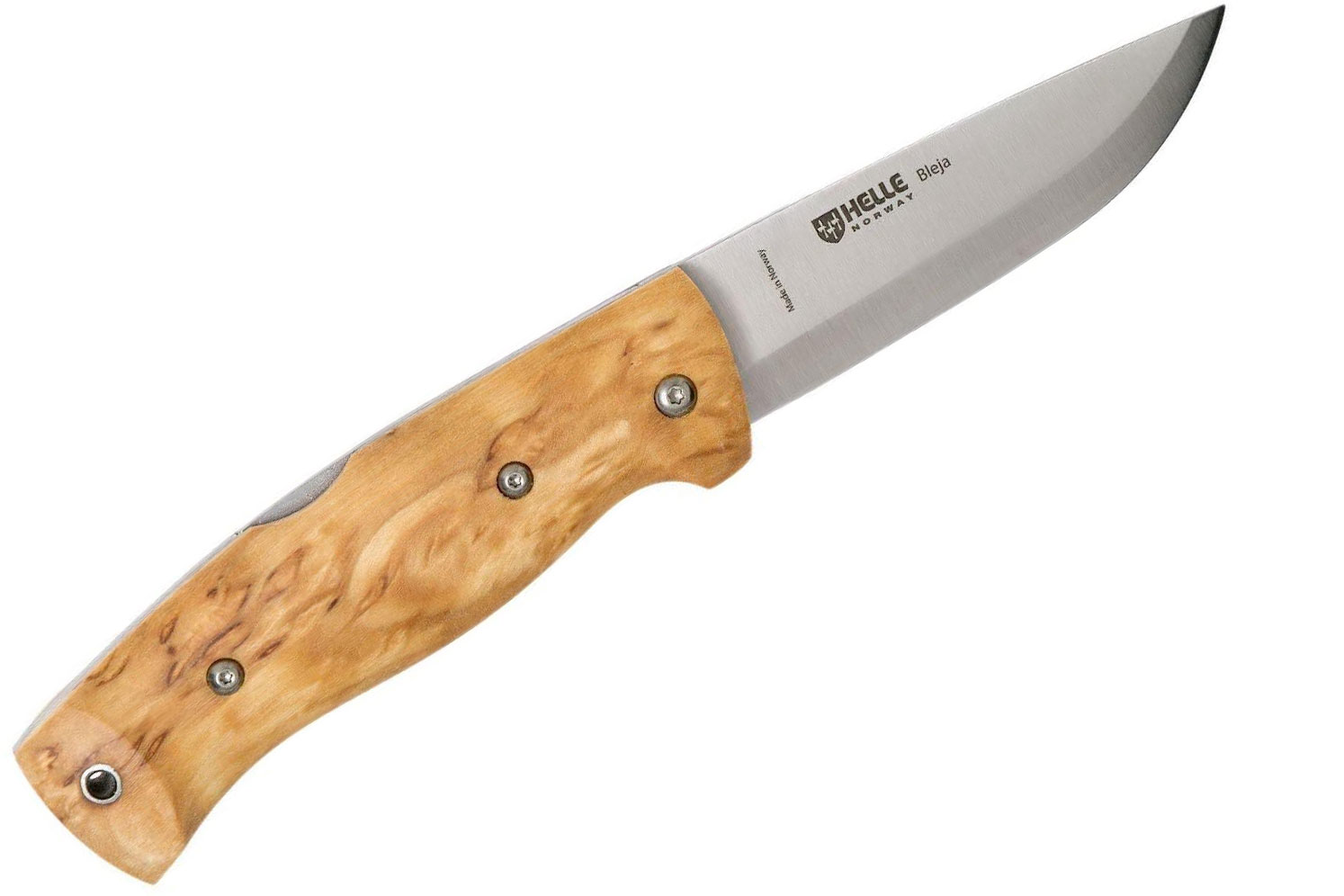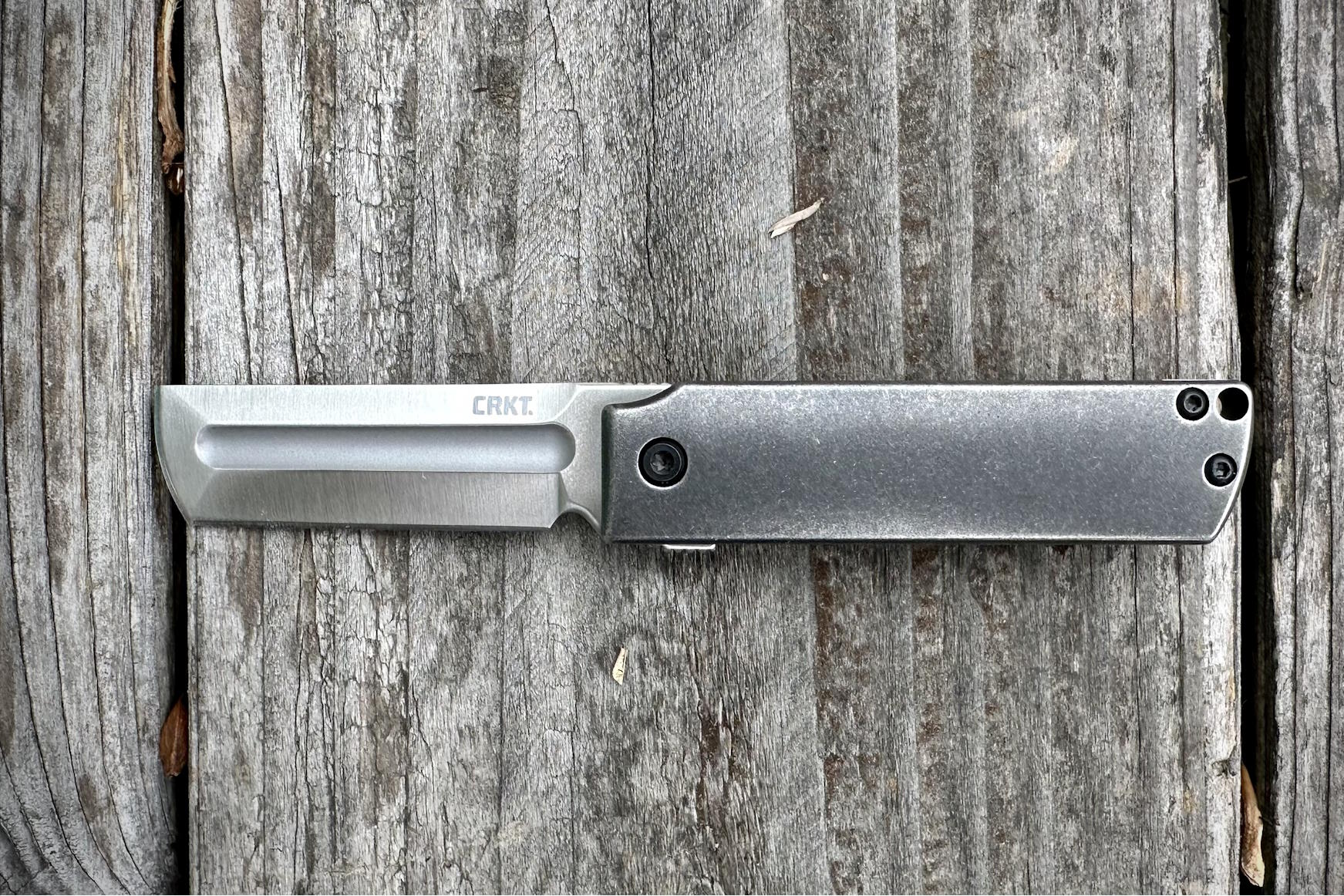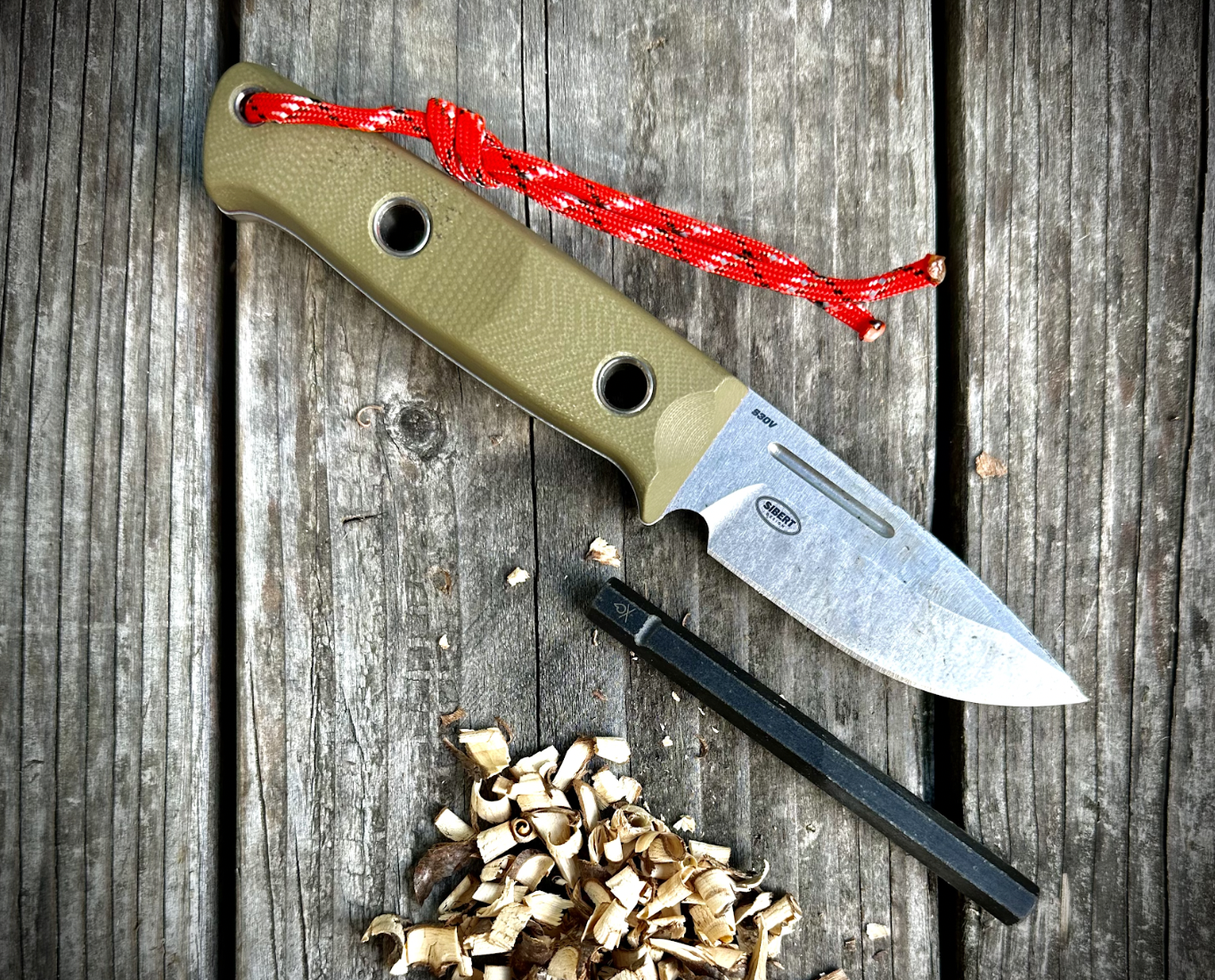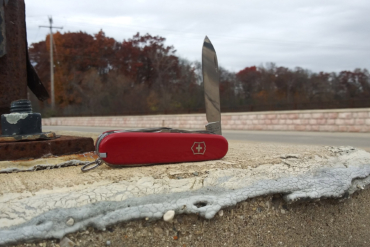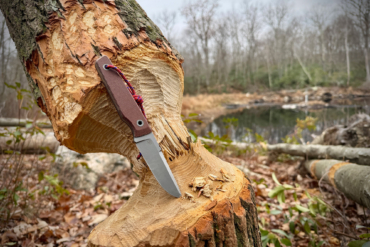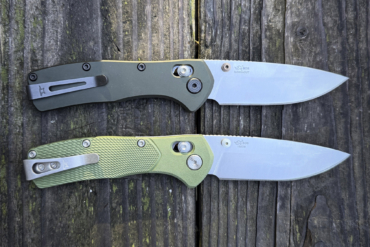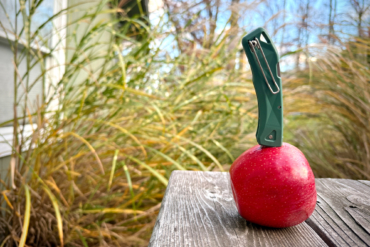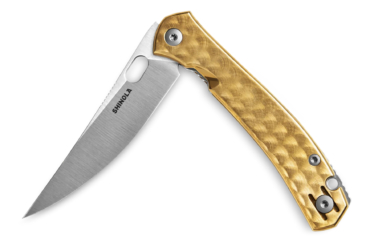Generally speaking, when considering a viable knife for bushcraft antics, you don’t usually consider a folding knife. After all, part of the bushcraft life is splitting kindling to make a fire. That’s just not something you would consider doing with a folding knife — usually.
But sometimes a folding knife comes along that is built for serious use and abuse like a fixed-blade knife. Say, a knife with a stainless steel blade and Scandi grind that meets or exceeds the demands of adventurous, outdoorsy folks in Norway — folks who spend a lot of time in forests and on mountains, surviving with their knives. If those folks recommend a folding knife for bushcraft, we would all be remiss to ignore them.
The Helle Bleja is that folding knife.
At nearly 8 inches long with a 3.35-inch blade, the Bleja falls within the general size requirements of a bushcraft blade. Its triple-laminated stainless steel (H3LS) has a stellar Scandi grind and Helle’s trademark curly birch handle scales.
If you shook your head at the word “folding,” or frowned at the stainless steel blade on a bushcraft knife, you should take the next few minutes to read this review and expand your minds. This won’t hurt a bit!
In short: At $225, the Helle Bleja represents an investment. But it’s the kind of knife that can do everything you want it to and then some. If you get bored with it, you can pass it on to your kids. And if you don’t, you can be buried with it, because it will last that long. Besides, the Bleja hails from an old culture known for troll hunting. That has to mean something.
- OAL: 7.90”
- Blade length: 3.35”
- Blade steel: H3LSS (Triple Laminated Stainless Steel)
- Blade shape: Drop point
- Sheath: Leather
- Weight: 6.6 oz.
Pros
- Helle’s proprietary stainless steel
- Curly Birch handles scales
- Scandi Grind
Cons
- It’s a wee heavy
Helle Bleja Review
Bushcraft Blade Steel
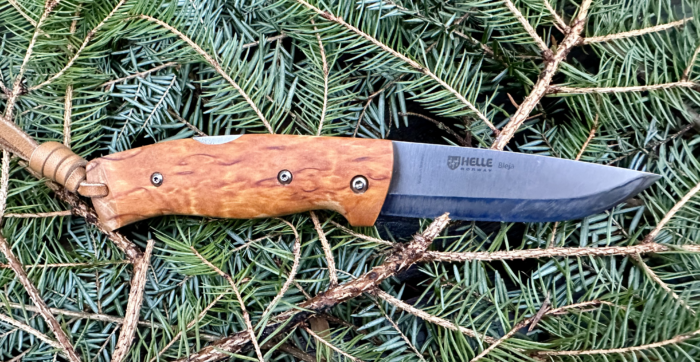
Before I dive into the nitty gritty, I want to take a moment to talk about a long-debated topic with bushcraft knife steel. The general consensus is that carbon steel, being softer and less susceptible to cracking, is the ideal steel for a bushcraft knife. It is believed that stainless steel, being harder, cannot stand up to the demands of bushcraft and will inevitably chip, crack, shatter, and fail.
While I can’t equivocally dismiss this theory as incorrect, the truth is that it’s more of a case-by-case scenario. The modern knife world is filled with steel that has been reconfigured and rebaked to be the best of the best. We’re seeing more and more bushcraft knives made from stainless steels, like S35VN and Magnacut, while tried-and-true carbon steels, like 1095 and 440C, are increasingly left on the shelf to rust.
The steel used in the Bleja has been employed by Helle since the 1960s. H3LS is strong, durable, corrosion-resistant, and abrasion-resistant. It also holds an incredible edge and is easy to sharpen. Also, contrary to folklore, it can be used to throw some serious sparks with a Ferro rod.
No, flint doesn’t work great with stainless steel, but Ferrocerium does just fine. If you’re still relying on flint, tell your friend Daniel Boone I said “hello.” It’s 2023; get with the program.
To set the record straight, the right carbon or stainless steel will meet or exceed your expectations in a bushcraft knife. The key benefit of stainless steel is that it won’t rust.
Design & Features
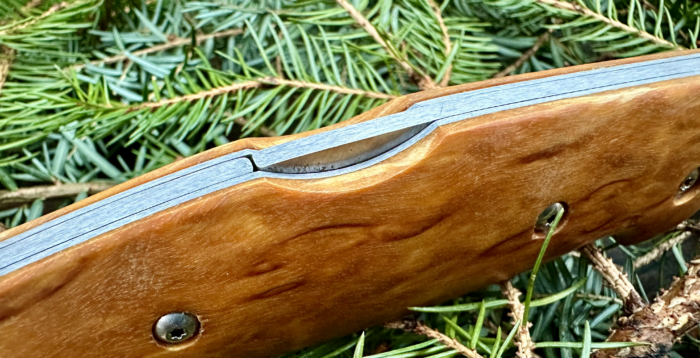
The Helle Bleja is made from an awesome combination of H3LSS triple-laminated stainless steel and curly birch handle scales. The Bleja also uses stainless steel liners for structure and has a lock-back lock mechanism in the spine. This will keep the blade locked in place in even the most demanding situations.
H3LS stainless steel is a proprietary steel made by Helle that has been used for more than 50 years. It features a high-carbon core and a soft, stainless outer layer. This outer layer is flexible, which makes it less likely to chip, crack, or shatter. Plus, H3LS can be honed to near razor sharpness. It will also hold a great blade edge while remaining easy to sharpen when the time comes.
The Bleja does not have a pocket clip, but it does come with a handcrafted leather sheath for carry. Also important to note, the Bleja requires two hands to open. This owes to its tight tolerances, which give it structural strength that rivals a fixed-blade knife. There’s no thumb hole, thumb stud, or flipper tab. In their place is a nail nick on the blade.
First Impressions of the Helle Bleja
I’ll be the first to admit that it’s kind of weird using a folding knife in bushcraft situations. Then I think back to all the old carving and whittling knives my grandfather used around the farm. All of those were folding knives. They all took a beating on a daily basis. And, importantly, they were all made from carbon steel and have long lost their original blade profiles due to hasty sharpening.
That said, the Bleja is big and heavy and I just know I can beat it up. Based on its composition, it should perform phenomenally in all conditions at all of the tasks to which I would subject it.
The only thing I am concerned about is the fact that I’ll never be able to open this knife with gloves on. Nail nicks in knife blades are old school. They have their place and generally represent the past. They’re nice to see on dressier knives, but a pain in the ass on utility knives.
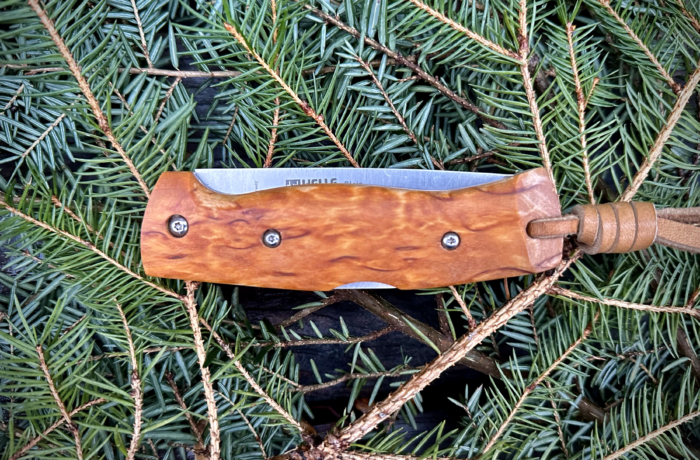
Either way, when the Bleja locks up, it’s locked in place. Lock-back locks are far from frequent these days, but they’re hard to beat. Although they do make me wary of batoning with the Bleja, as I don’t want the lock to pop if I hit the spine. This concern never arises with crossbar locks, but a lock back relies on being pushed down, instead of pulled back to engage and disengage.
In the Field
To meet this worry head on, the first thing I did with the Bleja was baton with it. I really wanted to get that sorted and out of the way. Surprisingly, I didn’t have issues I feared when batoning. But I would recommend avoiding it because even though I know what I am doing, it could be a fluke.
If anything, I recommend limiting yourself to no more than three hits on the spine to get it seated, and then flip the wood and knife over and strike the top of the wood. Once the knife seats, flip the log over again and alternate hits between the front of the blade, and behind the wood over the pivot.
Beyond that, I couldn’t find anything the Bleja couldn’t do for me in the woods. Its Scandi grind made it great for food prep. Being stainless, it was also very easy to clean so that I didn’t have any wood guts and goop on the blade when I sliced through peppers and onions.
Minor Gripes
My one gripe with the Bleja rests with its sheath (and it’s the same gripe I have with almost every leather sheath on the market today). It’s right-hand carry only. I’ve trained myself over the years to keep my knife on my right side and transfer it to my left hand, so this is far from a deal-breaker. But I wanted to make my fellow lefties aware of the situation.
Also, I recommend you resist the urge to loosen the pivot screw in hopes of increasing the fluidity of the opening/closing of the knife. The Bleja isn’t meant to be fast; it’s meant to be strong and durable. If you feel the need to get a little more fluidity out of the pivot, use some of your favorite, food-grade lubricant and shoot a couple of drops around the pivot.
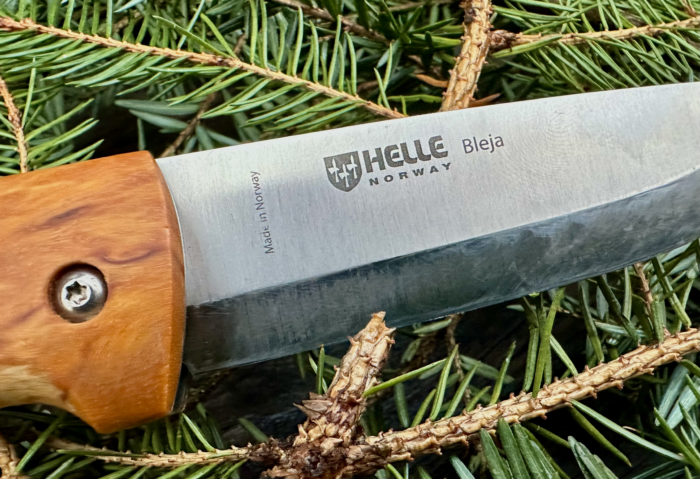
Conclusion
This is the second time I have reviewed the Helle Bleja. I first tested this knife in 2017, and I wanted to see if anything had changed in my approach or opinions. I find that the timelessness of its construction reflects in its performance over the years.
That said, I am not sure that I would pick a folding knife as my first choice for a bushcraft adventure, but this Helle can handle it. It’s really well made and can take the abuse you throw at it.
It’s also nice to look at; I took a little extra pride in cleaning it up when I was done using it for this review. I recommend using a very light amount of olive oil on a rag to keep the handle scales conditioned. It might just be me, but I want this knife to be here for a while.
